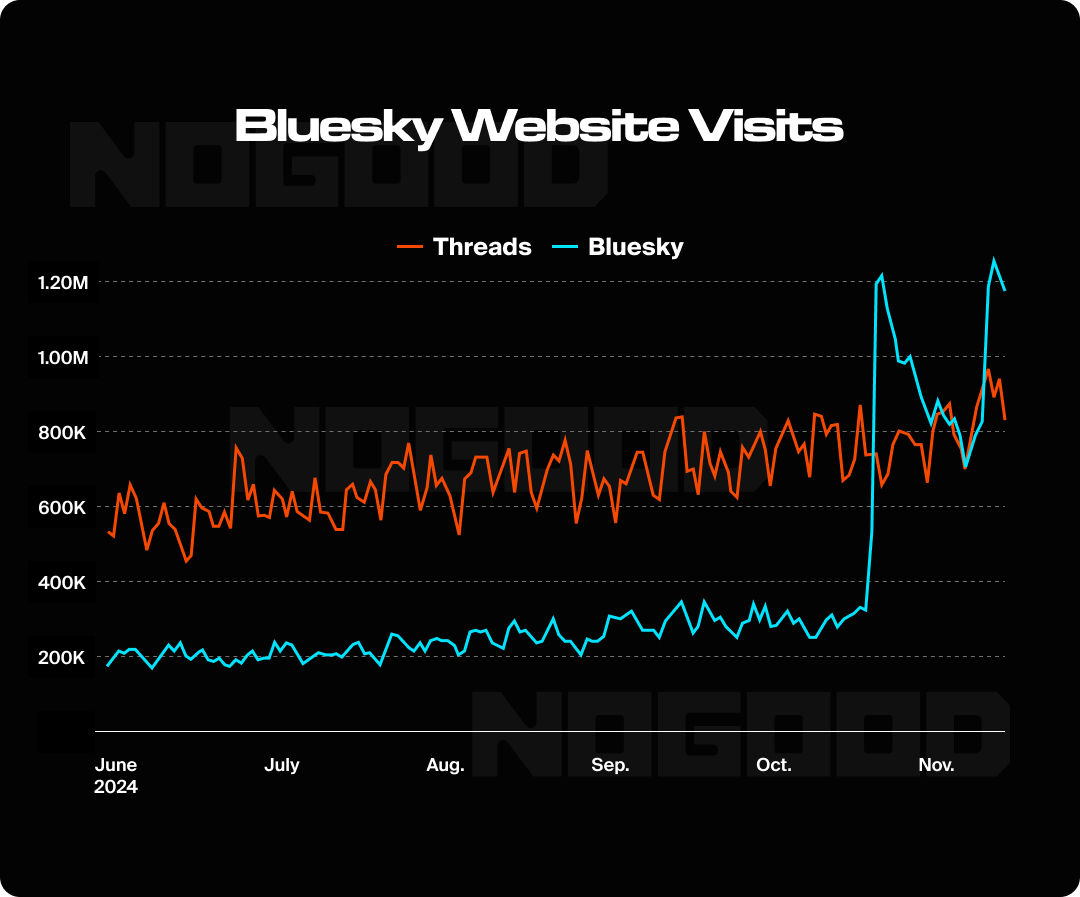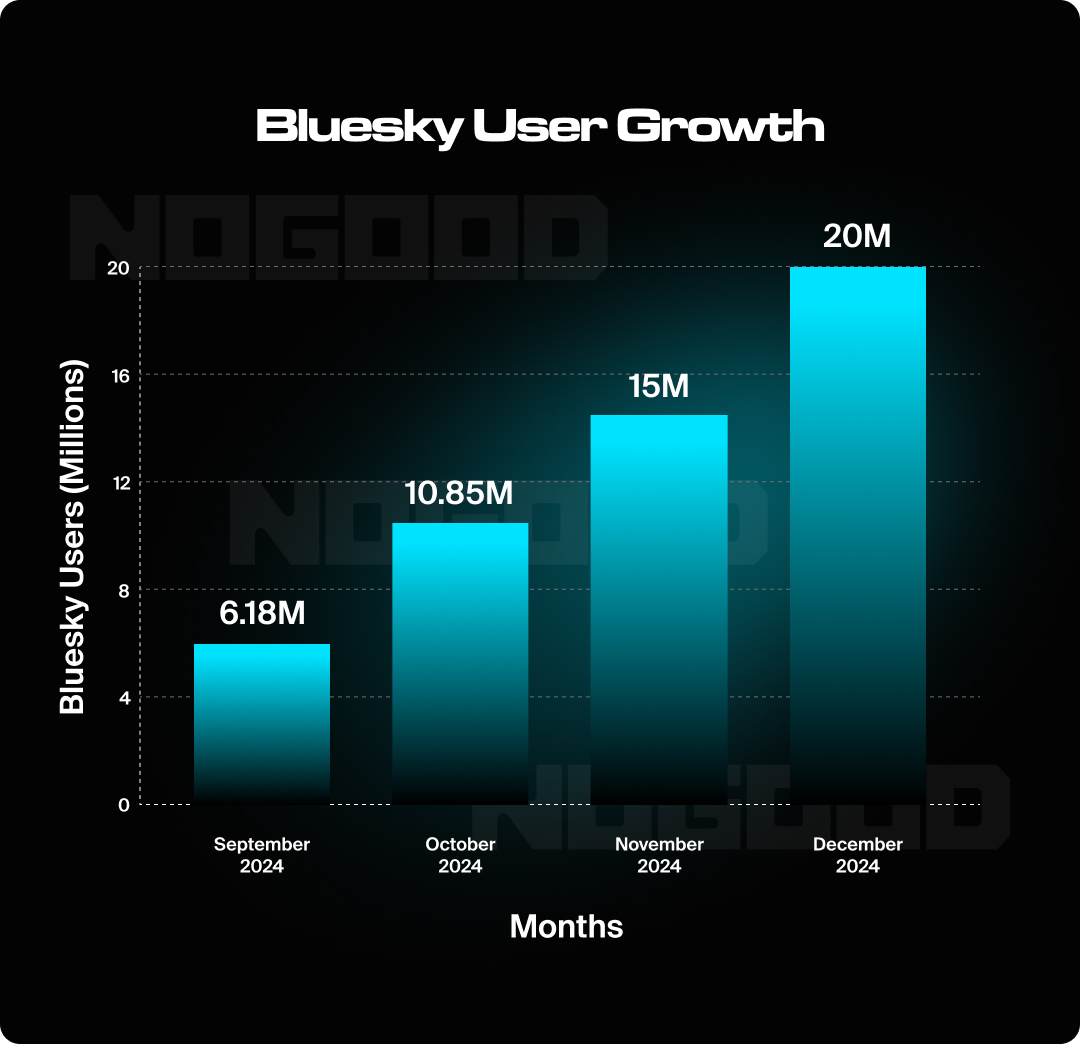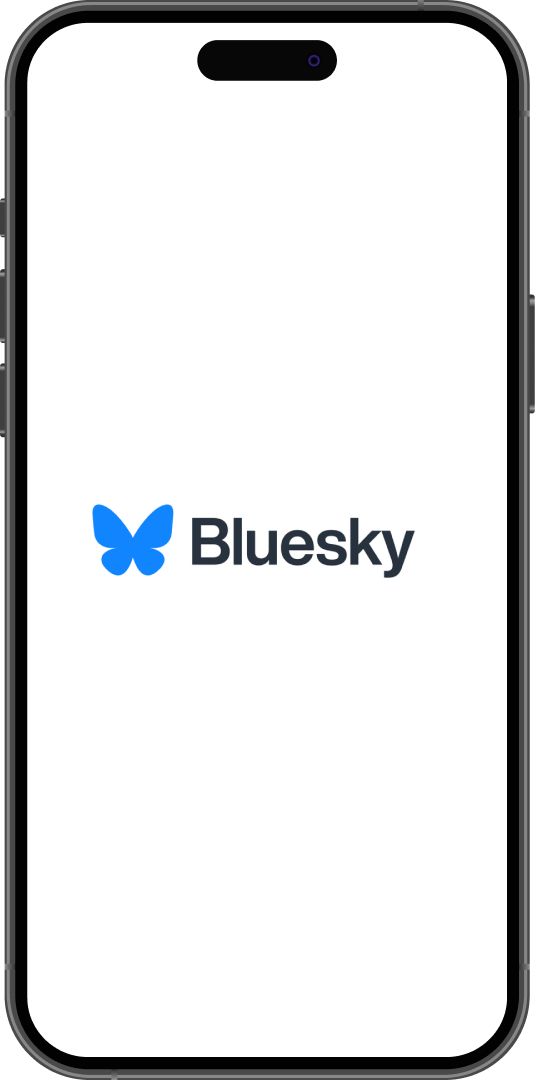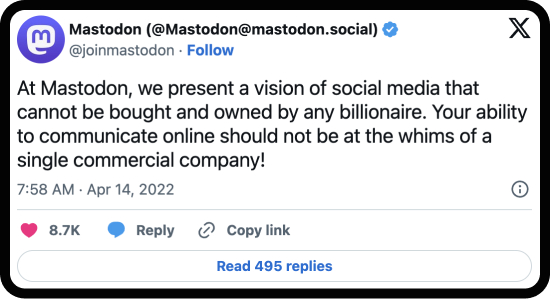Do you remember Twitter dot com?
In the not-too-distant past, it was a website where content creators, brands, journalists, aspiring influencers, and average social media enjoyers all cohabitated (relatively) peacefully and dissected breaking news, trending topics, and the latest meme du jour.
Slowly, over the last two years, the platform that was the de-facto conversation starter for the world of entertainment, sports, and media as a whole has morphed into an engagement-baiting echo chamber. The platform’s design harnesses anger and capitalizes on monetized misinformation.
Twitter’s transformation into X, the everything app, has resulted in stagnating follower growth, bots running rampant in user replies, and the most meaningful metrics being hidden behind a paywall. And while many popular accounts are operating with a business-as-usual mindset, many have jumped ship entirely — seeking an alternative platform that feels more like the social media landscape of the past.

As these competitors continue to emerge, it can be hard for brands to determine what the best fit for their audience and content strategy might be. In this guide, we’ll introduce some of the most promising apps that have emerged recently and look at whether they might be worth investing in as a new channel for your brand in 2025.
Our Top 4 Choices for Alternatives to Twitter
1. Bluesky
Perhaps the most surprising benefactor of Twitter’s ongoing implosion is the website’s original owner, Jack Dorsey.
The co-founder’s bet on Bluesky has been paying off, with more than 20 million users flocking to see what the new platform is all about over the past several months. What initially began as an open-source alternative to Twitter’s sprawling dominance of the social media landscape has quickly pivoted to position itself as a more positive version of what many view as a toxic communication channel.

At first glance, you might be surprised to see how much Bluesky’s interface directly mimics what made Twitter successful in the first place. There’s a timeline of posts from accounts you follow and the conversations they’ve engaged with, with the option to drop a like or add your own comments. However, the platform’s algorithm organizes information differently, allowing users more control over the hierarchy of what’s displayed to them.
One benefit Bluesky offers is the option to build different feed displays, which the creator can customize and share. Another feature that other networks are scrambling to adopt from Dorsey’s growing app is called ‘Starter Packs,’ which curate a network of related or recommended users to connect with in bulk. This control over what content is served, rather than automatically suggested by the algorithm, has been cited as a major benefit by those who’ve already made the jump.

While Bluesky’s active user count has continued to climb, big brands seem more dubious about fully embracing the platform. Publishers like The New York Times and The Washington Post have begun regularly sharing their stories on the site, and more celebrities are eager to engage at their fans’ encouragement.
However, a potential problem for marketing professionals is that Bluesky has explicitly made the current lack of advertisements a value proposition. As the budding social network aims to improve over time, it plans to introduce a paid subscription that strengthens personalization on the app and allows users to opt out of certain content.
2. Threads
Another appealing option comes from Meta, which rolled out Instagram’s text-based companion app Threads with great success last summer. The channel’s continued success has been more of a challenge, but in terms of raw existing users, Threads is hard to beat.
The platform makes sense for brands with an existing presence on Instagram as well, since joining and following your existing connections is as simple as pressing a button. In fact, if you’re reading this, it’s quite likely you’ve signed up for Threads already, even if you don’t remember doing so.

Threads’ launch in July 2023 was met with anticipation and excitement, as the influx of users willing to sign up signaled the potential for a future outside of Twitter. Despite the barebones nature of the app’s initial release, Threads brought in 100 million new accounts within the first five days and ended 2024 with more than 300 million active monthly users.
Growth has been a problem for Meta’s latest experiment, with the initial burst of attention stalling out for most of 2023. But the continuing exodus from Twitter, especially after the 2024 election cycle, has put Threads’ downloads on a promising trajectory.
However, Meta’s tendency to tweak the algorithm and reward different kinds of content has impeded widespread adoption. The platform prioritizes engagement and ‘reach’ above all else and has received criticism for circulating irrelevant or spammy content. There was a minor controversy earlier in the year, when Meta stopped recommending political content from accounts that users don’t already follow with little warning.
These volatile changes have made Threads’ position as a direct replacement to X less certain, but brands and large creators continue to warm up to it. The platform has been more welcoming to brand content, supporting cross-posting with other Meta products like Facebook and Instagram. Mark Zuckerberg has also stated that advertising will be supported once Threads reaches “hundreds of millions of users.”
3. Mastodon
Perhaps the least well-known app in this emerging space, Mastodon has existed the longest. Supported by the fediverse, a decentralized social network, the site was initially intended as a micro-blogging platform. But as more people felt pulled to post places other than Twitter, developers began to introduce more traditional social media networking features in response to existing demand.
As an open-source alternative, Mastodon lets users opt in to which server, and therefore which conversations, they want to be a part of. This has freed the platform from content that chases algorithmic trends and breaks community guidelines.

Most of Mastodon’s support comes from crowdfunding instead of outside investors, but with a smaller, more-invested userbase, conversations feel meaningful and can drive real impact. Brands could use a Mastodon instance (which essentially functions as a shared server) to directly communicate with customers and supporters, akin to a shared Discord server or blogging forum.
It isn’t likely that Mastodon, or any of the fediverse-focused apps, will overtake a larger social media platform as the water cooler standard, but many brands shouldn’t be prioritizing that. Sometimes, a direct line of communication to your most committed community members is more valuable than overnight virality with diminishing returns.
4. X
Despite all of these emerging competitors, many organizations have remained committed to their existing presence on the social network now known as X. For advertisers and paid media specialists, the potential number of impressions feels too big to throw away over a change in ownership. Abandoning your existing audience is never a salient strategy, despite many followers signing off the platform for good.
Many still view X as the fastest route of communication to a brand, with crisis communications and customer support fueling engagement through direct messages and replies. The sheer volume of active accounts participating in peer-to-peer social networking still dwarfs any other competitor, making X a worthwhile investment for brands with a significant following.
Projections for 2025 show that experts anticipate a continued loss of daily active users, so it’s important to pay attention to metrics like follower count and impressions as you continue to post content on X. For that direct relationship with customers, many have begun to explore more traditionally-private networks like Reddit and Tumblr.
Conclusion: Where Will Brands Go Next?
Currently, brands looking to diversify their presence beyond X might find it difficult to determine the best path forward. If, at the very least, your audience is still regularly engaging with the content you’re sharing on X, the accounts are worth keeping open. But it’s important to look closely at metrics shifting over time to see what draws followers in and potentially converts new members of your audience.
We’ve seen social media platforms like Vine and CoHost rise and fall over time, and even apps like Clubhouse seemed poised to take over the world before falling into irrelevance. As a social media strategist, following the crowd and diving headfirst into the latest flashy platform with an all-or-nothing approach can feel tempting. Still, true organic growth requires time and a proven content strategy.
To ensure that you’re reaching your target audience and meeting your goals, consider auditing each channel and ensure that the platforms you’re active on are the right medium for your followers.






